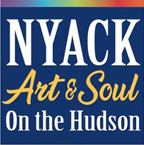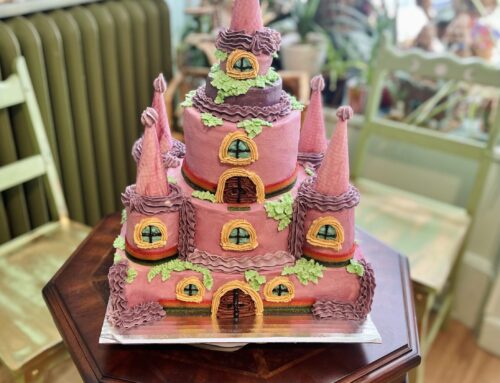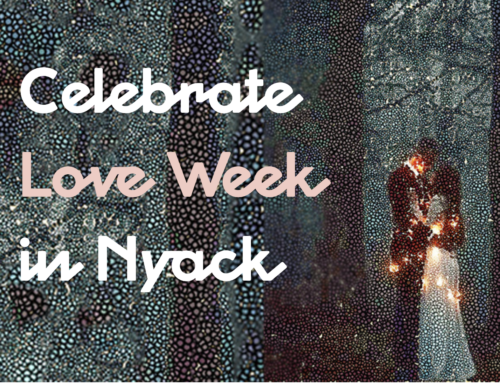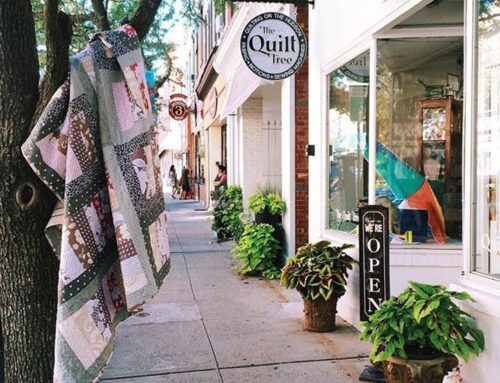by Bill Batson
When printmaker Sylvia Roth moved into her home in South Nyack in 1977, she had no idea it was the birthplace of a major figure in American art, Joseph Cornell. This house on Piermont Avenue seems to have its own designs, selecting artistic occupants for over a century.
Emily Dickinson, Cornell’s enduring muse, wrote that “nature is a haunted house, but art is a house that tries to be haunted.” As Roth describes the creative output of subsequent generations of her family, one begins to suspect that this is a house haunted by art.
So you really didn’t know that Joseph Cornell lived here before you moved in?
No. I did not know. I was a Cornell fan. I had a poster here from a gallery that I had bought. It was a beautiful blue and white collage with a French title. I had it hanging on the door going into the kitchen. Then one day, there was a knock on the door. It was Alan Gussow.
Gussow was devoted to the arts community in Rockland County. Nervously, he told us that this was the childhood home of Joseph Cornell. He didn’t think that whoever lived inside would care to know.
He showed us a photo of Joseph and his sister from 1908.
Alan said that people wanted to place a plaque on the house, and we said we wanted to have a party.
My daughter, Susan Roth-Beerman was 17 when the party was held to honor Cornell. Mayor Cross came, and Cornell’s sister Elizabeth, who was in the photo.
Michael Minard and Frankie D, who were living here at the time, performed a song about Cornell. That is when the plaque was installed.
I understand that you are an artist as well. What kind of art do you make?
For many many years, I was a printmaker. I had my own studio, Hudson River Editions. I was making my own art, etchings and paintings, ever since I was ten.
My mother, Faye, painted. As an immigrant, she never had a chance to get an art education. But she loved to paint flowers and birds.
I would go to the Museum of Natural History and draw the dioramas. My librarian at PS87, Aaron Suskind, encouraged me. He always praised the holiday decorations I made in 7th grade. He said I should go to Music and Art. I passed the test and got in. That was it.
After Music and Art I studied at NYU with Philip Guston. I then had a job at the Museum of Modern Art, as the assistant to Priscilla Porter, the potter.
My printmaking started in Rockland County. I studied with Roberto Delamonica at the Rockland Center for the Arts. I then became his assistant. Wherever he taught, he took me. We worked together at ROCA and the Art Students’ League. When he left his position at the New School for a while, I substituted for him.
The art world became aware of my work through local artists here in Rockland like Steven Green and Annie Poor, daughter of Henry Varnum Poor. One day at an opening at the Museum of Modern Art, Knox Martin leaned over the table and said, “Sylvia, I have been thinking about you. You are working with great artists and you should be doing your own publishing and making money. You really are a master printer. You should start your own print studio.” I borrowed money from my brother, ordered a press, and started Hudson River Editions. It was 1981.
I am now a member of the Chelsea Art Group. After a heart attack in 2002, I stopped printmaking and started working as an art adviser. Don Christensen taught me all about the business of art and now I work with him. Don is the president of Chelsea Art Group. We educate our clients, help them build art collections and find great art to live with. We also conduct museum and gallery tours and take clients to art fairs.
Any other artists in the family?
My daughter Susie is a therapist and bereavement counselor at United Hospice of Rockland and she also has a private practice. And she still makes art. She studied with one of the founders of the New York School of Painting, Richard Pousette-Dart. She was studying at ROCA, the year the Cornell knock came at the door.
Susan’s twin, Anna Hays, is a writer and my son SJ, is a screenwriter.
Susie met her ex-husband, John Beerman, at Skowhegan, an artist colony in Maine. He is a well known landscape artist.
My granddaughter Hannah Faye, is at Bard. She is going to make painting her life. She studied this summer at the Studio School in the Village, with her professor from Bard, Joe Santore.
Susie’s son, Joey, is a musician and plays bass at the conservatory at SUNY Purchase. His first teacher was Rob Stoner of West Nyack. He then started on the upright bass at the Lagond music school in Elmsford. Charlie Lagond performed with King Creole and the Coconuts.
Now tell me about the second knock at the door?
A woman was in town for her 37th Nyack High School reunion and wanted to visit the home where she grew up. She wanted to see the backyard where she had also been married. That is when we learned that Ralph Pearson had lived here and that was just the beginning of the coincidences.
Her father Ralph Pearson was a well known printmaker, who wrote the book “How to Look at Modern Pictures.” Pearson was so committed to making art accessible that he became a printmaker.
As we walked with her through the house, she pointed at one room as the place where he did his printmaking. I had just had the floor in that very room reinforced to install a 2000 pound etching press.
She then asked to go upstairs to see what she called the apricot room. My daughter and I were startled. I had just painted that room apricot. We had no idea that one room had been a print shop and the other painted apricot.
Is there anything else you would like to share about living in the childhood home of Joseph Cornell?
We’ve read a great deal about Cornell. He experienced a great deal of alienation and isolation in his life, but his memories of his childhood in Nyack were pleasant and peaceful.
There is a photo of him with his disabled brother in front of this house. He was devoted to his brother and would incorporate his brother’s drawings into some of his works.
But for me, my favorite pieces are the ones with movie stars from the 30s and the 40s.
About Joseph Cornell
b. Nyack, NY 1903
d. Flushing, NY 1972
This house on Piermont Avenue was the childhood home of Joseph Cornell. His father, Joseph, was a well to do designer and his mother, Helen TenBroeck Storms Cornell, was a kindergarten teacher. He had two sisters, Elizabeth and Helen and one brother, Robert.
When his father died in 1917, Cornell’s family moved to Queens, NY. He lived for most of his life in a small, wooden-frame house on Utopia Parkway with his mother and his brother Robert. Cornell devoted much of his life to the care of Robert, who had cerebral palsy. Cornell became a recluse and other than a few years at Philips Academy in Andover, Massachusetts, he never left the metropolitan New York City area.
His art work, however, became internationally recognized, collected and exhibited.
According to the artist and writer Lee Mamunes, who is also a docent at the Edward Hopper House Art Center, “Cornell was a true eccentric and completely self-taught. He was not a sculptor or painter. He was a collector. In his late 20s, he began to assemble fragments of everyday life, including memories of his happy childhood in Nyack, placing them in glass-fronted shadow boxes resembling tiny stage sets.”
Here is how Pultizer Prize winning poet John Ashberry described Cornell: “The genius of Cornell is that he sees and enables us to see with the eyes of childhood, before our vision got clouded by experience, when objects like a rubber ball or a pocket mirror seem charged with meaning, and a marble rolling across a wooden floor could be as portentous as a passing comet.”
Sylvia Roth is a Master Printer and has collaborated with world renown artists including John Chamberlain, April Gornick, Alfonso Ossorio, and Karen Finley. Works produced from her press, Hudson River Editions appear in numerous collections including those of the Metropolitan Museum of Art, The Whitney Museum, The Smithsonian Institute, and The Brooklyn Museum. Roth’s own paintings and prints have been exhibited in galleries around her native New York and across the country including Los Angeles, Minneapolis, and Boston.
For more information visit Chelsea Art Group
Thanks to Myra Starr, Susan Roth-Beerman, Evelyn Fitzgerald and Pam Moskowitz.
Special thanks to Lee Mamunes for presenting some of the facts that I have incorporated in my sketch log in her excellent article for the Historical Society of the Nyacks’ most recent newsletter, “Joseph Cornell and Emily Dickinson: Kindred Spirits.”
An activist, artist and writer, Bill Batson lives in Nyack, NY. Nyack Sketch Log: “A House Haunted by Art“ © 2015 Bill Batson. Visit billbatsonarts.com to see more.
This article originally appeared on NyackNewsAndViews.com on November 17, 2015.





